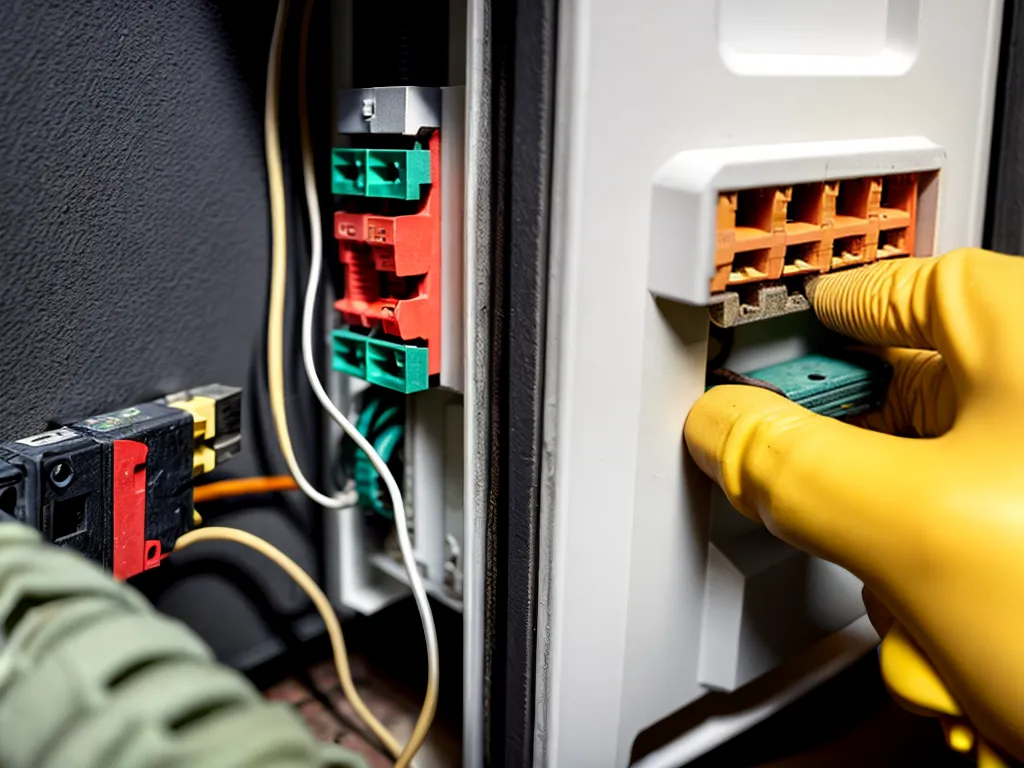
Grounding issues in electrical systems can be frustrating to track down and resolve. However, with some knowledge of common problems and a systematic approach, you can uncover even well-hidden grounding faults. In this comprehensive guide, I will walk through the basics of electrical grounding, explain why proper grounding is essential, outline common causes of grounding problems, and provide actionable steps to isolate and correct hidden ground faults in residential and commercial electrical systems.
What is Electrical Grounding and Why is it Important?
Electrical grounding provides a safe path for stray electrical current to flow to the earth. It prevents the buildup of dangerous voltages that could harm connected equipment or people.
Proper grounding is critical for:
- Safety - Grounds provide protection from shocks and electrocution.
- Reliability - Grounds prevent damage to appliances and electronics from power surges.
- Noise reduction - Grounds minimize electrical noise and interference in circuits.
In a properly wired system, certain metal components are bonded to the grounding system, including:
- Neutral wires
- Metal electrical boxes
- Conduit
- Ground rods
- Appliance frames
This provides a low-resistance return path for current to follow. Without solid grounding connections, you may experience frequent tripped circuit breakers, malfunctioning equipment, and an increased risk of shocks.
Common Causes of Grounding Issues
Ground faults occur when there is an unintended path for current between a hot wire and ground. Several common factors can compromise grounding effectiveness:
Loose Connections
Loose or corroded connections between ground wires, neutral wires, and grounded metal components can introduce resistance. This resistance reduces the effectiveness of the grounding path. Vibration, corrosion, and improper installation are frequent causes.
Damaged Wiring
Exposed or damaged wires with breached insulation can allow current to bypass the intended circuit path and flow directly to ground or grounded objects. This is an electrical hazard and fire risk.
Inadequate Wire Gauge
Using undersized grounding wire that is too small for the electrical load creates excessive resistance in the ground return path. 12 AWG and 10 AWG are commonly used ground wire sizes.
Multiple Ground Rods
Having multiple ground rods that are not properly bonded together can cause a floating ground condition. Stray current may flow through the earth between ground rods instead of returning safely to the panel.
Improper Ground Rod Installation
Inadequate soil contact with ground rods due to poor depth, flooded soil, or very sandy or rocky soil reduces the effectiveness of earth grounding.
How to Test for Hidden Ground Faults
Tracking down elusive grounding issues requires methodical testing using the right equipment. Follow these guidelines for systematic troubleshooting:
1. Check Existing Documentation
Review any available wiring diagrams, installation records, and past test results. This can provide clues about the grounding system's overall configuration.
2. Inspect the Electrical Panel
Check for the presence of a proper grounding electrode conductor running from the panel to one or more ground rods outside. Verify all grounding electrode connections are clean, tight, and secured by the proper fastener.
3. Check Major Appliances
Inspect the ground prong and connections on all major appliances, especially those experiencing issues. Loose or missing ground screws are a red flag.
4. Test with a Multimeter
Use a digital multimeter (DMM) to measure voltage between hot and ground. Any reading indicates a ground fault. Start by testing outlets experiencing problems.
5. Conduct Continuity Tests
Check continuity between neutral and ground buses in the panel. Then test continuity of all ground wires leading outdoors to ground rods. A lack of continuity means an open ground connection.
6. Perform Fall of Potential Tests
For extensive grounding systems, a “fall of potential” test can precisely measure ground resistance between rods and the panel. This requires specialist equipment and training. Values above 5 ohms indicate problems.
7. Inspect Exposed Ground Wires
Visually check any accessible grounding electrode conductors for damage, improper splicing, undersized wire gauge, and loose connections.
8. Consider Advanced Diagnostics
Tools like ground fault circuit interrupters (GFCIs) and clamp meters can provide more information to narrow down faults. An electrician can assess if these methods are appropriate.
Correcting Ground Faults
Once you’ve identified specific grounding deficiencies, repairs and upgrades are necessary. Here are some best practices for remediating issues:
- Tighten all loose ground wire connections and secure properly with green screw or bolt heads.
- Replace damaged or undersized ground wiring with new 6 AWG or larger copper wire.
- Properly bond any disconnected ground rods back to the main panel with 6 AWG grounding electrode conductor or larger.
- Drive additional ground rods to achieve a cumulative resistance under 5 ohms.
- Use exothermic welding for critical inaccessible bonds between rods and conductor.
- Remove all orphaned ground rods not connected back to the main service panel.
- Hire a licensed electrician immediately if ground faults pose a safety risk.
Maintaining reliable equipment grounding requires periodic inspection and testing. But with diligence and the right diagnostic approach, even hidden ground faults causing electrical issues can be discovered and eliminated. Let me know if you have any other questions!